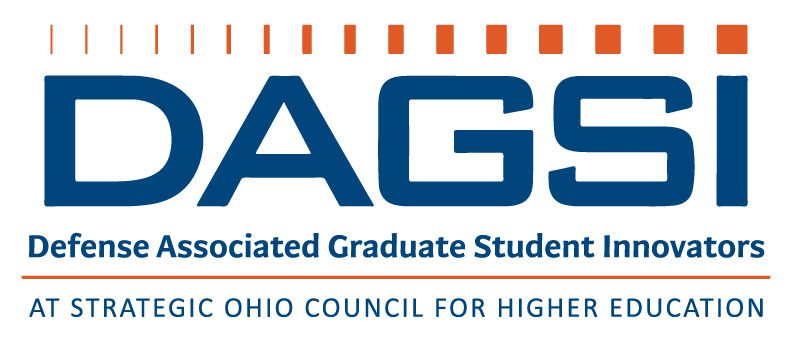| Topic # | Topic Title | Contact |
| RQ26-1 | Extending the Tractability of Large-Eddy Simulation for High Reynolds-Number Flows | Dr. Daniel Garmann |
| RQ26-2 | Meta-materials for Structural Applications | Dr. Alex Pankonien |
| RQ26-3 | Numerical Simulation of High Mach Number Viscous Flow | Dr. Nick Bisek |
| RQ26-4 | Advanced Flight Control | Dr. Michael Bolender |
| RQ26-5 | Leveraging Both Experimental and Computational Data to Study Hypersonic Flight | Dr. Matthew Borg
Dr. Matthew Tufts |
| RQ26-6 | Supersonic Combustion Ramjet Research | Dr. Campbell Carter |
| RQ26-7 | Compact and Novel Combustion Concepts | Dr. Andrew Caswell |
| RQ26-8 | High-Altitude Combustion Ignition and Relight Research | Dr. Andrew Caswell |
| RQ26-9 | Enabling Robust and Durable Aerospace Structures for Combined, Extreme Environments | Dr. Thomas Eason |
| RQ26-10 | Intelligent Power Systems for Next Generation Aircraft | Dr. Joe Fellner
Dr. James Scofield |
| RQ26-11 | Efficient Small Scale Propulsion and Power Systems | Dr. Mark Fernelius |
| RQ26-12 | Enhanced Optical Flow Diagnostics/Minimization of Particle Seeding | Benjamin Hagen |
| RQ26-13 | Active Thrust Balance of Engine Mainshaft Bearings | Mr. Brian Nicholson |
| RQ26-14 | Wall-Modeled LES of Shock-boundary Layer Interaction (SBLI) | Dr. Ez Hassan |
| RQ26-15 | Advanced Structural Concepts for Lighter and Low Cost Aircrafts | Dr. Richard Beblo |
| RQ26-16 | Low-Speed, Unsteady Aerodynamics: Physics, Modeling, and Control | Dr. Albert Medina |
| RQ26-17 | Advanced Analytical Tools for Turbine Engine Bearing Compartments | Mr. Brian Nicholson |
| RQ26-18 | Combustion Stability in High-Speed Flows | Mr. Timothy Ombrello |
| RQ26-19 | Correcting Structural Calibration Data to Enable High Frequency Force Measurements | Mr. Ian Maatz |
| RQ26-20 | Chimera Hole Cutting for High-Order Discontinuous Galerkin Fluid Solver | Mr. Christopher Schrock |
| RQ26-21 | Structural Dynamics & Mechanics of Turbomachinery Components | Dr. Dino Celli |
| RQ26-22 | Magnetocaloric Effect of Ni-Mn based Heusler Alloys | Dr. Zafer Turgut |
| RQ26-23 | Design Approaches for Hypersonic Inlet and Isolator Operability | Mr. Tyler Gardner |
| RQ26-24 | Reusable Thermally Complaint Air Vehicle Structure Design and Analysis | Dr. Justin Clough |
| RQ26-25 | Control Techniques for Aircraft Energy Management | Dr. Adam Parry |
| RQ26-26 | Trajectory Planning for Unmanned Aerial Vehicle Systems | Dr. Dave Grymin |
| RQ26-27 | Computational Design, Analysis and Integration of Aircraft Power and Thermal Management Subsystems | Dr. Soumya Patnaik |
| RQ26-28 | Digital Engineering and Model Based Systems Engineering (MBSE) for Aircraft Power and Thermal Subsystems | Dr. Soumya Patnaik |
| RQ26-29 | Modeling and Simulation Study of Aircraft Environmental Control System for UAS Military Aircraft | Dr. Abdeel Roman |
| RQ26-30 | Study of DEW thermal performance under aircraft mission profile conditions | Dr. Abdeel Roman |
| RQ26-31 | Two-phase flow thermal systems study for UAS aircraft applications | Dr. Abdeel Roman |
| RQ26-32 | Analysis and Development of Inlet Systems for Airbreathing Propulsion | Dr. Stuart Benton |
| RQ26-33 | Machine Learning Approaches in Computational Fluid Mechanics | Mr. Christopher Schrock |
| RQ26-34 | Fan and Compressor Experimental Aerodynamics | Dr. Michael List |
| RQ26-35 | Fan and Compressor Design, Modeling, and Simulation | Dr. Michael List |
| RQ26-36 | Unsteady Flow Physics and Aerodynamic Flow Control in High-Work Low Pressure Turbine Passages | Dr. Christopher Marks |
| RQ26-37 | Multidisciplinary nonlinear time-spectral methods for air vehicle design | Dr. Nathan Wukie |
| RQ26-38 | Goal-oriented adaptive methods for air vehicle design | Dr. Nathan Wukie |
| RQ26-39 | Coupling Computational Fluid Dynamics (CFD) Analysis and Optimization Techniques for Scramjet Engine Design Applications | Dr. Mark Hagenmaier |
| RQ26-40 | Novel Power Generation and Thermal Management Concepts for High-Speed Vehicles | Dr. Levi Elston |
| RQ26-41 | Advanced Multi-Scale Combustion Systems | Dr. Brent Rankin |
| RQ26-42 | Rotating Detonation Engine Foundational Research | Dr. Brent Rankin |
| RQ26-43 | Experimental Aeroservoelasticity for Rapid Vehicle Design | Dr. Kevin McHugh |
| RQ26-44 | Mission Engineering Research for Aerospace System of Systems (SoS) | Dr. Rick Graves |

